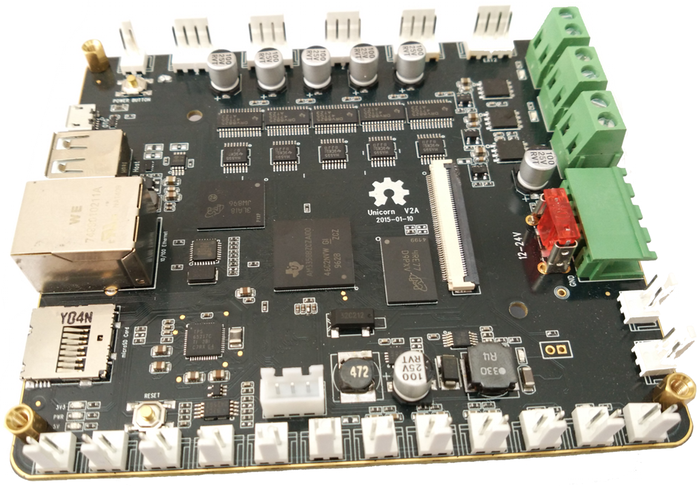Results 1 to 10 of 20
-
03-10-2015, 04:54 PM #1
BBP Control Board - Speed Up Your 3D Printer
FastBot, having just launched a Kickstarter campaign for their BBP board, is catering to those who want more power and speed for their 3D printers — as well as laser cutters and CNC machines. Featuring an AM335x, 1GHZ Cortex-A8 processor, FastBot has also developed a firmware for the BBP board to make a ‘high frequency step control signal,’ which is responsible for the higher speeds in 3D printing. They also offer the BBP 1S which is exponentially more powerful, with extra features such as an interface for higher temperature printing and extended interfaces to allow for color printing. Find out more in the full article: http://3dprint.com/50168/kickstarter...ots-bbp-board/
Below is a photo of the BBP board:

-
03-10-2015, 07:26 PM #2
Any idea whether this board is delta printer ready? I haven't seen any mention of it.
-
03-10-2015, 10:36 PM #3Engineer

- Join Date
- Dec 2014
- Location
- Canada
- Posts
- 498
I dont get why this would be much better then a rambo board
-
03-10-2015, 11:44 PM #4Engineer

- Join Date
- Aug 2014
- Location
- Montreal, Quebec
- Posts
- 576
-
03-11-2015, 09:30 AM #5Technician

- Join Date
- Oct 2014
- Posts
- 94
-
03-11-2015, 09:58 PM #6Engineer

- Join Date
- Aug 2014
- Location
- Montreal, Quebec
- Posts
- 576
It is nearly useless to develop faster electronics, when the physical limitation/ hardware are bottlenecking it. As soon as you increase speed, you're just going to torture your printer faster.....
Motor noise,Vibration, loosen screw, nozzle jamming, layers that are still way too hot even with active cooling....
-
09-24-2015, 12:57 AM #7Student

- Join Date
- Sep 2015
- Posts
- 6
Speed is a change direction, and other physical limitation will be dismiss.
-
09-24-2015, 01:48 AM #8
-
09-24-2015, 07:50 PM #9Student

- Join Date
- Sep 2015
- Posts
- 6
It's a fact accuracy and speed is mutex . highter speed get troubled in "Motor noise,vibration, loosen screw, nozzle jamming, layers".
We need face it and improve to change them. If research highter speed is wrong, we will lock myself in here and 3d print remain is slow after 10 years.
Don't stop improving it, must try some new direction.
-
09-25-2015, 02:01 AM #10
But that's precisely the point man.
Simple physics say that viscous goo can't be applied much faster. So, if you want to go faster you need to change the technology and the underlying physical properties you aim to leverage. Here the limit is clearly viscosity/cooling management.
Look at the SLA printers. When the guys decided to go faster, they created this oxygen activation process for the resin. The limiting factor was not the laser or its aiming system.






 Reply With Quote
Reply With Quote





What's wrong with this prting?
04-14-2024, 05:15 PM in General 3D Printing Discussion